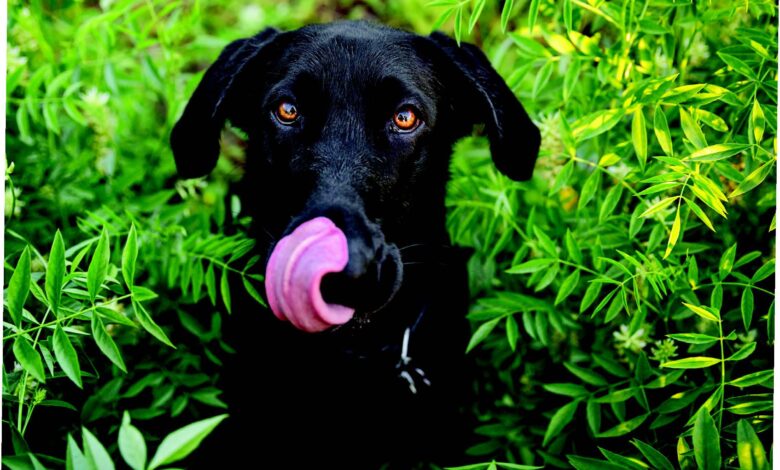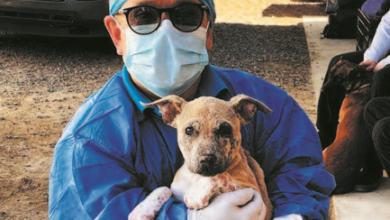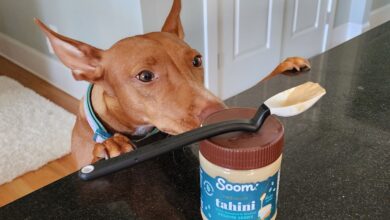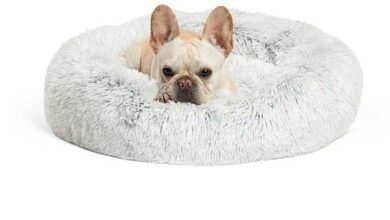CBD 2.0 – Dogster

A lot of the world has changed since 2019, when Dogster first reported on CBD oil being used for pets with an award-winning article. We have a new president, we’re living in a pandemic and CBD products for pets have evolved. Several experts and manufacturers share what’s changed in the CBD world since then to catch you up with what that means for our furry friends.
“With CBD being such a new area in general, we’re still learning more each day,” says Steve Ball, CEO of Zesty Paws (zestypaws.com) based in Orlando, Florida. “According to Packaged Fact’s latest supplements report, CBD is the fastest growing trend in both humans and pets. Personal experiences, stories and successes have been key to the natural growth of the CBD space. As pet parents explore CBD, they share those personal stories with friends and family, which is organically growing the space, encouraging other pet parents to try them.”
Jon Neveloff, partner with King Kanine (kingkanine.com) in Fort Lauderdale sees the same cause and effect. “As the general public has learned more about the human uses for CBD, it has trickled down to the pet side of the industry. National chain stores like Whole Foods, Vitamin Shoppes and Walgreens have their CBD products prominently displayed. This has created much more awareness and recognition even if they don’t use the products themselves.”
And potentially on the horizon? “The industry seems to be moving more toward different types of cannabinoids that are available,” Jon says. “Another trend, if you can call it that, is over the past few years it’s become more apparent that CBD topicals are very beneficial for pets. Just like humans, pets have CBD2 receptors in their skin that allows absorption and anti-inflammatory response when applied.”
Dr. Angie Krause with Boulder Holistic Vet in Boulder, Colorado, has noticed an update, as well. “There is new evidence that CBD might be best given with a small fatty meal.”
Tinctures, Topicals and Treats
What hasn’t changed since the inception of CBD products is that they come in different dispersal methods. Most CBD products for dogs fall into one of three categories: tinctures, topicals and treats, which can be chews or crunchy.
“Tinctures are sold as an oil that is in a bottle with an eyedropper for dosing,” explains Joey DiFrancesco, CEO and founder of LolaHemp (lolahemp.com) in New York City. “It is generally made from hemp extraction oil mixed with a carrier oil so that it is concentrated for precise dosing. It is often the most inexpensive way to purchase CBD for dogs when you calculate the per mg of CBD pricing.” CBD tinctures can be added to food or given orally directly in the dog’s mouth.
There are also CBD topicals for pets specifically designed for the skin. “They are often formulated to include other beneficial ingredients to help soothe and heal the skin,” Joey says. “The best topicals use natural ingredients and a full-spectrum CBD oil.”
Most CBD pet product companies have a full line of products available as tinctures, topicals or treats. Here are some samples of each of these categories:

*Never give CBD or hemp products for people to your pet, as human products can contain ingredients toxic to animals.
Finally, there are the treats. CBD treats for dogs offer convenience because each treat has a specific dose, which will vary by manufacturer, Joey says, who adds that they are also a great option when traveling.
The right one for Fido How do you know which is best? It may take some testing on your part with your own dog.
The method of administration should be tailored to the individual pet depending on condition, weight, required dose and the product used, among other things, according to Dr. Joseph K. Rosentel, veterinarian and vice president of product development and supply chain at Pet Releaf (petreleaf.com), based in Littleton, Colorado.
“Chews may not be very practical for small patients needing a tiny dose or cost-effective for a giant dog needing a large dose. On the flip side, a finicky small dog may not allow administration of a liquid directly into the mouth even though it is the best choice for exact dosing, and a concentrated extract may be an excellent economical choice for a large dog,” he says.
“While all forms are equally beneficial, we do find that CBD oil administered directly into the mouth offers the fastest results for most pets,” explains Jodi Ziskin, director of communications with Treatibles (treatibles.com) in Nashville, Tennessee. “That’s because the oil absorbs into the bloodstream by capillaries in the cheek, gums and under the tongue. Chews, chewables and oils mixed with food enter the stomach, go through the digestion process and are absorbed into the bloodstream through the digestive tract. It takes a bit longer for the benefits to be experienced.”
Jodi also says consumer interest in these products has driven some changes. “The good news is that pet parents have become quite knowledgeable about CBD, are asking excellent questions and seeking more options. Many companies have created new products including additional oil dropper bottles with a variety of milligram counts, intro-size packaging so pets can find what they like and more.
When it comes to CBD oil for your dog, here’s something that hasn’t changed — don’t share your product with your dog. “Pet owners should never give CBD or hemp products made for people to their pets,” Joey warns. “Not only can these products contain dangerous amounts of THC, they can also contain potentially deadly ingredients, such as xylitol, an artificial sweetener that is safe for people but deadly to dogs.”
What’s In A Name
As a quick overview, here are some of the different terms commonly used with CBD and what they mean.
“Dogs, as well as humans, have an endocannabinoid system (ECS) that is made up of receptors on cell membranes that may regulate a variety of processes and homeostasis,” Steve says. “The ECS has cannabinoid receptors and CBD binds to those receptors and may help those processes.”
According to Dr. Rosentel, “CBD hemp oil, typically extracted from the stalks, flowers and leaves of the hemp plant, is full of cannabinoids (natural compounds) that are only found in the cannabis plant family. CBD coming from hemp plants (and not marijuana hybrids) are extremely high in CBD and extremely low in the most wellknown cannabinoid, THC. For this reason, CBD hemp oil allows you to get all the health benefits of the hemp plant without also having the psychoactive effects of THC. Some companies only use hemp seeds, which are much cheaper, in their products. Hemp seeds do not contain any CBD at all. Hemp seeds are an excellent source of protein and Omega 3, 6 and 9 but don’t hold the multitude of healthy cannabinoids found in the plant itself.”

Joey says that “CBD isolate products are made by first refining the compound CBD into a pure isolated crystalline form. All of the other compounds found in hemp are stripped away. Then this pure form of CBD is added back into a product. On the other hand, full-spectrum CBD products are made using an extract that preserves the various compounds (cannabinoids, flavonoids, terpenes, etc.) that are found in hemp. Some research has shown, and many industry experts agree, that full-spectrum oils may have better healing properties, as the trace elements found in whole plant extracts seem to support each other in synergistic ways.” This phenomenon has been dubbed by cannabis researchers as “the Entourage Effect,” he says.
“We breed our genetics in house from seed to bottle to ensure consistency in each bottle with our proprietary hemp strain being cultivar specific,” says Elisha Lehrhoff, head of research and toxicologist with HempMy Pet (hempmypet.com) in Longmont, Colorado. “Cultivar specificity combines the same profile of terpenes, cannabinoids and flavonoids to ensure your pet will experience the entourage effect with every single dose.”
Challenges For Vets
If you’ve asked your veterinarian about some of these terms, as well as recommendations, you may have gotten some vague answers that aren’t her fault. Many vets are subject to legal restrictions.
“It is important to understand that veterinarians are restricted by state licensure laws,” Joey says. “In addition, there are issues with liability for veterinarians who would not be covered by insurance in cases where CBD products are recommended. This remains a hurdle for many veterinarians who are encouraged by the research on CBD in pets, but yet still unable to recommend the products due to fear of loss of licensure.”
Jodi adds that only two states — California and Michigan — allow veterinarians to discuss CBD with pet parents. “We are confident this list will grow exponentially over the next few years,” she says.

“The AVMA does not approve of hemp utilization since cannabis is considered a schedule 1 drug under the Controlled Substance Act,” Elisha says. “This leaves veterinarians in a sticky situation, as owners are able to choose from a large variety of hemp products for their pets with or without their veterinarians’ approval. Many veterinarians are turning to research studies to learn about the pharmacokinetics and pharmacodynamics of hemp in animals. Veterinarians want to become the No. 1 source for consumers regarding hemp product consumption in animals but must be provided with educational tools from the AVMA, FDA and scientific research in order to achieve that goal.”
Whether your 2021 goals include trying CBD for your dog or just learning more about it, there are many tools at your disposal. As with any supplement for your pet, research and see what works for you both. You may just find a new way to help your dog feel better. And that’s something to celebrate every year.
5 Factors To Look For:
As with any product category, there are quality CBD items and those that are less so. As Dr. Angie Krause points out, “The increase in the number of manufacturers means that CBD is more widely available in many different supply chains. However, not all growing and extraction processes are created equal.”
Experts for this article shared their top five recommendations on what buyers should look for to get the best CBD for their dogs.
- Make sure the product is third-party tested and can provide the consumer a certificate of analysis to prove that. This COA should verify the lack of chemical and pesticide residue. This is usually shared through a QR code on the label to follow state regulations.
- Look for a 100% human-grade product.
- Was the product grown in the United States? Hemp is like any other botanical and picks up a lot from the soil in which it is grown, so non-U.S. sourced hemp could be high in heavy metals.
- Confirm the hemp was organically grown and that each batch has a certificate of analysis.
- Look for the NASC logo. The National Animal Supplement Council has specific requirements in place for pet products containing hemp, including required labeling standards.
Source link






